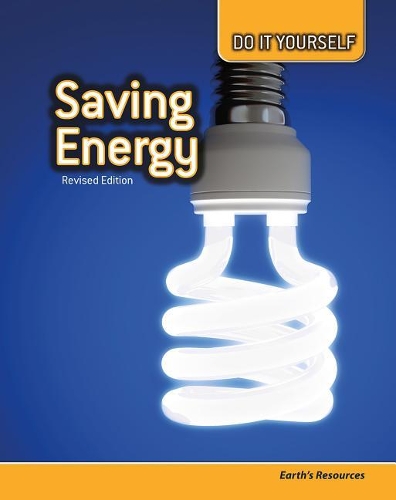
Saving Energy: Earths Resources (Do it Yourself)
(Paperback, Revised ed.)
Publishing Details
Saving Energy: Earths Resources (Do it Yourself)
By (Author) Buffy Silverman
Capstone Press
Capstone Press
1st August 2016
Revised ed.
United States
Classifications
Children
Non Fiction
333.7916
Physical Properties
Paperback
48
Description
Where does your energy come from How do coal, oil, and gas form Why is Earth's climate changing Do It Yourself offers an exciting new approach to understanding and investigation. Each book helps you to conduct your own experiments and activities, and to learn more about the world around us.
Reviews
Explains what energy is, how to conserve it, and fuels for our future. There are photos and simple diagrams of experiments that you can do to help save energy. The facts and descriptions are accurate and consistent with the story and setting. Recommended--Karen Egger, Media Library Specialist, Keller Middle School Clark County School District Library ServicesFebruary 09-- "Clark County School District Library Services"
Series: Do It Yourself - This is a simply written book on energy for the upper grades. It incorporates lots of visuals and experiments. I think it's informative, but not too overwhelming as some nonfiction can be. And it's definitely relative to today's times. Recommended--misticamacho, Library Media Specialist Arlington Independent School District2/13/2009-- "Arlington Independent School District"
This non-fiction book explains the different types of energy we have, how they were or are made, and how it affects our earth when they are used. It explains ways to save energy and several activities with step-by-step instructions. Photographs or digital illustrations are on each page. This would be a great resource for research science fairs. - Omaha Public Schools-- "Omaha Public Schools"
This series demonstrates that even young readers can embrace a green lifestyle. Integral to each topic are the hands-on activities that encourage children to explore the concepts being introduced. Each title defines the topic and then presents our current dilemma. Composting presents food chains and webs, focusing on the decomposers. The bulk of the book is a how-to for vermicomposting, with detailed instructions on setting up a worm bin to compost kitchen scraps. Recycling details the problems caused by the massive amounts of waste produced daily and the landfills that result. Energy describes our nonrenewable sources and presents some of the alternatives. Water makes the case for water conservation in spite of its seeming abundance. Each title gives practical examples for reducing, reusing, and recycling specific to its topic. The pages include blocks of text, captioned photographs, and call-out boxes. The activities lack sufficient introductory material and, in some cases, adequate detail in the supplies lists. A concluding discussion for each activity helps readers to make real-world connections. Spot illustrations demonstrate the numbered instructions, but some procedures, such as building a compost bin in Recycling, require more detail. Still, young conservationists looking for hands-on activities will find these timely titles attractive.-Carol S. Surges, McKinley Elementary School, Wauwatosa, WI School Library Journal-- "School Library Journal"
